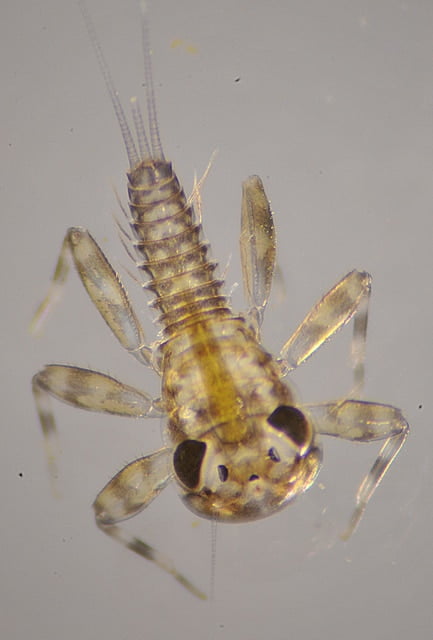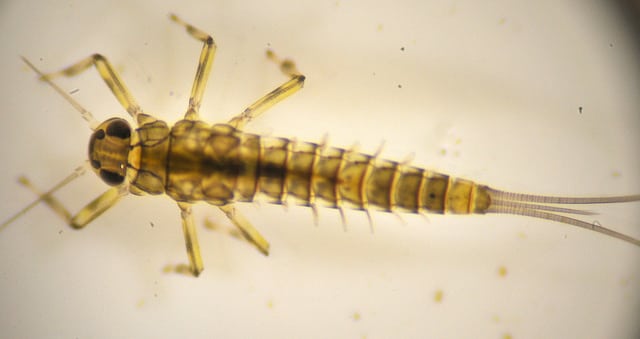- Over 675 species in 21 families in North America
- All are aquatic as larvae and terrestrial as adults
- Most are sensitive to pollution and are widely used in water quality monitoring
- Important prey for many species of fish
| Phylum: | Arthropoda |
| Class: | Insecta |
| Order: | Ephemeroptera |
Identification Tips:
Larvae
• Elongated body with 3 pair of segmented legs each ending in one claw
• Most types have 3 tails, but a few have only 2
• Gills on some or all abdomen segments
• Gills plate-like or filamentous
Adults
• Wings membranous with many veins
• Wings folded together above body when not flying
• 2 or 3 long, thin tails extend from abdomen
Life History:
• Larvae found in most freshwater habitats
• Most collect or scrape detritus to feed; a few are predatory
• Most have one generation per year, but some have 2 or more, and others have a 2 year life cycle
• Adults do not feed and have no mouth parts
• Most types emerge, mate and die within 24 hours
• Mate in swarms over wter
| POLLUTION TOLERANCE | ||||
| Very Sensitive | Somewhat Sensitive | Facultative | Somewhat Tolerant | Very Tolerant |
| Most | Most | Some | Some | |
| Pollution Indicator | One of the 'EPT ' families (Ephemeroptera) commonly used as indicators of good water quality |
––––––
Primary Information Source:
Voshell, J. Reese. 2002. A Guide to Common Freshwater Invertebrates of North America. McDonald and Woodward Publishing Company. Blacksburg, Virginia.




